-
 Bitcoin
Bitcoin $117900
0.31% -
 Ethereum
Ethereum $3766
0.28% -
 XRP
XRP $3.176
-0.31% -
 Tether USDt
Tether USDt $1.000
0.00% -
 BNB
BNB $795.6
1.51% -
 Solana
Solana $186.8
-1.09% -
 USDC
USDC $0.9999
-0.01% -
 Dogecoin
Dogecoin $0.2353
-1.33% -
 TRON
TRON $0.3226
1.49% -
 Cardano
Cardano $0.8172
-1.08% -
 Sui
Sui $4.178
3.06% -
 Hyperliquid
Hyperliquid $43.05
-3.39% -
 Stellar
Stellar $0.4367
-0.57% -
 Chainlink
Chainlink $18.62
1.47% -
 Hedera
Hedera $0.2828
6.63% -
 Bitcoin Cash
Bitcoin Cash $584.7
5.65% -
 Avalanche
Avalanche $24.81
2.53% -
 Litecoin
Litecoin $112.8
-0.88% -
 UNUS SED LEO
UNUS SED LEO $8.975
-0.08% -
 Shiba Inu
Shiba Inu $0.00001395
-1.07% -
 Toncoin
Toncoin $3.285
-1.05% -
 Ethena USDe
Ethena USDe $1.001
0.01% -
 Polkadot
Polkadot $4.123
0.76% -
 Uniswap
Uniswap $10.49
-0.18% -
 Monero
Monero $326.5
0.14% -
 Dai
Dai $0.9999
-0.02% -
 Bitget Token
Bitget Token $4.576
0.34% -
 Pepe
Pepe $0.00001247
-1.55% -
 Cronos
Cronos $0.1400
3.77% -
 Aave
Aave $295.1
-0.73%
What does the sudden enlargement of the ATR indicator mean? How to deal with price fluctuations?
A sudden increase in the ATR indicator signals heightened volatility in the crypto market, often due to news or high trading volumes, requiring strategic adjustments to manage risk effectively.
Jun 10, 2025 at 09:56 am

The Average True Range (ATR) indicator is a popular tool used by traders in the cryptocurrency market to measure volatility. A sudden enlargement of the ATR indicator can signal significant changes in market conditions, often indicating increased volatility. Understanding what this means and how to deal with the resulting price fluctuations is crucial for effective trading strategies.
What is the ATR Indicator?
The ATR indicator measures the market's volatility by calculating the average of true ranges over a specified period. The true range is the greatest of the following: the current high minus the current low, the absolute value of the current high minus the previous close, or the absolute value of the current low minus the previous close. A higher ATR value indicates higher volatility, while a lower ATR value suggests lower volatility.
What Does a Sudden Enlargement of the ATR Indicator Mean?
A sudden enlargement of the ATR indicator suggests that the market is experiencing increased volatility. This can be due to several factors, including significant news events, large volume trades, or shifts in market sentiment. When the ATR value increases sharply, it means that the price movements within the cryptocurrency market are becoming more pronounced, leading to larger price swings.
Causes of Sudden ATR Enlargement
Several factors can lead to a sudden enlargement of the ATR indicator. News and announcements related to cryptocurrencies, such as regulatory changes, technological updates, or macroeconomic events, can trigger significant price movements. High trading volumes can also cause the ATR to spike, as increased participation in the market leads to more substantial price fluctuations. Additionally, market sentiment shifts, such as a sudden change from bullish to bearish or vice versa, can result in heightened volatility.
How to Deal with Price Fluctuations Caused by ATR Enlargement
Dealing with price fluctuations caused by a sudden enlargement of the ATR indicator requires a well-thought-out strategy. Here are some approaches to consider:
Adjust Position Sizes: When the ATR increases, consider reducing the size of your positions to manage risk. Smaller positions can help limit potential losses during periods of high volatility.
Use Stop-Loss Orders: Implementing stop-loss orders can help protect your investments from significant downturns. Set your stop-loss levels based on the increased ATR values to account for larger price swings.
Diversify Your Portfolio: Diversification can help mitigate the impact of volatility in any single asset. By spreading your investments across different cryptocurrencies, you can reduce the overall risk to your portfolio.
Monitor Market News: Stay informed about news and events that could impact the cryptocurrency market. Being aware of potential catalysts for volatility can help you anticipate and react to sudden ATR enlargements.
Employ Volatility-Based Strategies: Consider using trading strategies that take advantage of increased volatility, such as straddles or strangles. These options strategies can profit from large price movements in either direction.
Implementing Stop-Loss Orders Based on ATR
Setting stop-loss orders based on the ATR can be an effective way to manage risk during periods of high volatility. Here's how to do it:
Calculate the ATR Value: Determine the current ATR value for the cryptocurrency you are trading. This can be done using most trading platforms or through manual calculation.
Determine Your Risk Tolerance: Decide on the percentage of your investment you are willing to risk. For example, if you are willing to risk 2% of your investment, you would set your stop-loss accordingly.
Set the Stop-Loss Level: Multiply the ATR value by a factor that aligns with your risk tolerance. A common approach is to use a multiple of the ATR, such as 2x or 3x. If the ATR is 100 and you use a 2x multiple, you would set your stop-loss 200 points away from your entry price.
Adjust as Necessary: As the ATR value changes, you may need to adjust your stop-loss levels to reflect the current market volatility.
Monitoring and Reacting to ATR Changes
Monitoring the ATR indicator and reacting appropriately to its changes is essential for managing price fluctuations. Here are some steps to follow:
Regularly Check the ATR: Keep an eye on the ATR values for the cryptocurrencies you are trading. Many trading platforms display the ATR as part of their charting tools.
Analyze the Trends: Look for trends in the ATR values over time. A sudden spike in the ATR can indicate a shift in market conditions that may require action.
React to Significant Changes: If you notice a significant increase in the ATR, consider adjusting your trading strategy. This may involve reducing position sizes, setting tighter stop-losses, or temporarily stepping back from the market.
Stay Informed: Continuously monitor news and market sentiment to understand the factors driving ATR changes. This can help you make more informed decisions about how to respond to increased volatility.
Using ATR to Identify Entry and Exit Points
The ATR indicator can also be used to identify potential entry and exit points for trades. Here's how:
Entry Points: Look for periods of low ATR values, which indicate lower volatility. Entering a trade during these times can help you avoid immediate large price swings. Additionally, if the ATR begins to increase after you enter a trade, it may signal a good opportunity to capture profits.
Exit Points: When the ATR value spikes, it may be a good time to exit a trade to lock in profits or cut losses. High volatility can lead to rapid price changes, so exiting a position during these times can help protect your investment.
Trailing Stops: Use the ATR to set trailing stop orders. As the price moves in your favor, adjust your stop-loss level based on the current ATR value to lock in profits while allowing for continued growth.
Frequently Asked Questions
Q: Can the ATR indicator be used for all cryptocurrencies?
A: Yes, the ATR indicator can be applied to any cryptocurrency. However, the effectiveness of the indicator may vary depending on the liquidity and volatility of the specific cryptocurrency.
Q: How often should I check the ATR indicator?
A: It's recommended to check the ATR indicator regularly, especially during times of high market activity. Daily checks can help you stay on top of changes in volatility, but more frequent monitoring may be necessary during particularly volatile periods.
Q: Is the ATR indicator suitable for long-term investors?
A: While the ATR indicator is primarily used by short-term traders to manage volatility, long-term investors can also benefit from monitoring it. Understanding periods of high and low volatility can help long-term investors make more informed decisions about when to enter or exit positions.
Q: Can the ATR indicator predict future price movements?
A: No, the ATR indicator does not predict future price movements. It measures historical volatility and can help traders understand current market conditions, but it does not forecast future prices.
Disclaimer:info@kdj.com
The information provided is not trading advice. kdj.com does not assume any responsibility for any investments made based on the information provided in this article. Cryptocurrencies are highly volatile and it is highly recommended that you invest with caution after thorough research!
If you believe that the content used on this website infringes your copyright, please contact us immediately (info@kdj.com) and we will delete it promptly.
- Cryptos to Watch in 2025: Punisher Coin, Chainlink, and the Altcoin Arena
- 2025-07-27 18:30:13
- Bitcoin, Altcoins, Rebound: Navigating the Crypto Comeback Trail
- 2025-07-27 18:30:13
- Ethereum, Bitcoin, and Altcoins: A Shift in Crypto Tides?
- 2025-07-27 19:10:13
- Windtree Therapeutics' Bold BNB Strategy: A $520 Million Crypto Play
- 2025-07-27 19:10:13
- Solana, Staking, and Unilabs: What's the Buzz in the Crypto Space?
- 2025-07-27 16:50:13
- VeChain, HBAR, Remittix: Navigating the Crypto Landscape in 2025
- 2025-07-27 17:10:12
Related knowledge
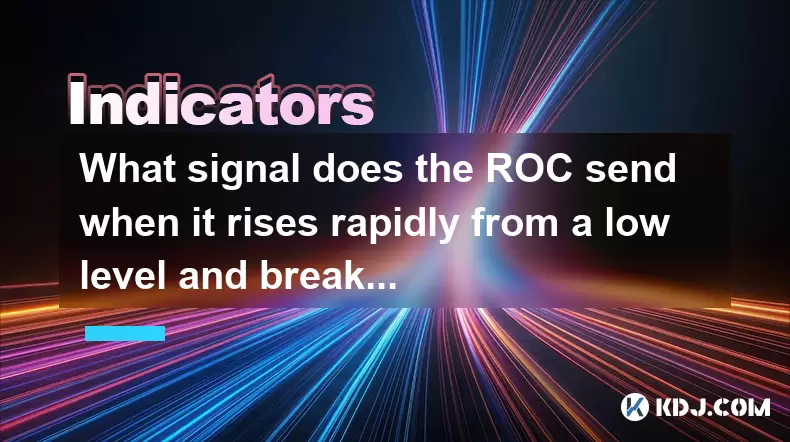
What signal does the ROC send when it rises rapidly from a low level and breaks through the zero axis?
Jul 27,2025 at 10:15am
Understanding the Rate of Change (ROC) IndicatorThe Rate of Change (ROC) is a momentum-based oscillator used in technical analysis to measure the perc...
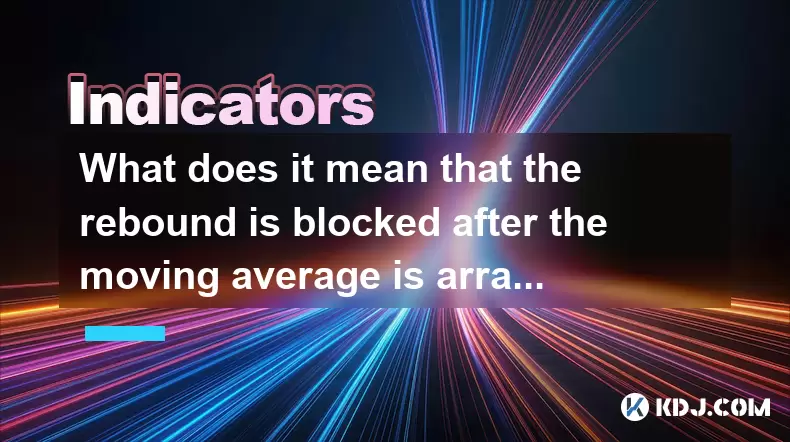
What does it mean that the rebound is blocked after the moving average is arranged in a short position for the first time?
Jul 26,2025 at 10:51am
Understanding the Short-Term Moving Average ConfigurationWhen traders refer to a 'short position arrangement' in moving averages, they are describing ...
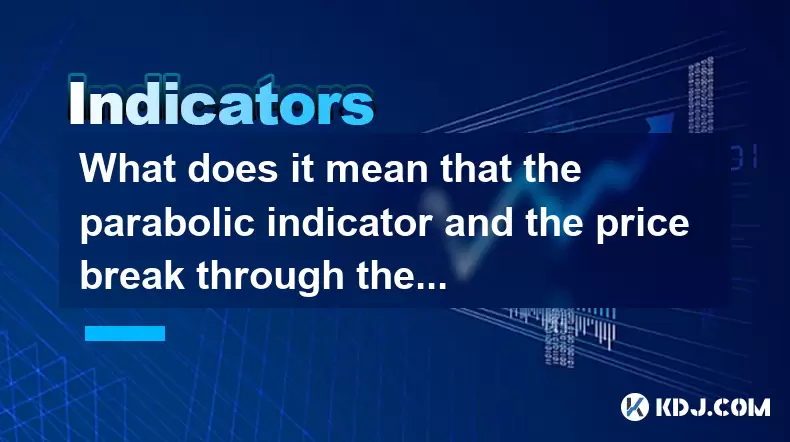
What does it mean that the parabolic indicator and the price break through the previous high at the same time?
Jul 26,2025 at 07:22pm
Understanding the Parabolic Indicator (SAR)The Parabolic SAR (Stop and Reverse) is a technical analysis tool developed by J. Welles Wilder to identify...
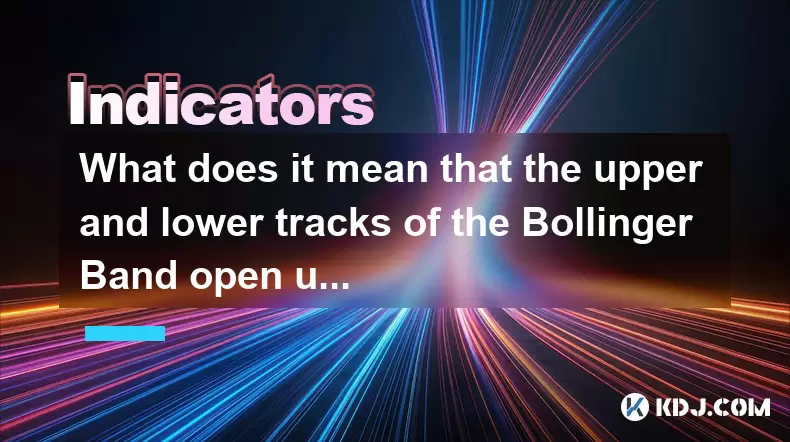
What does it mean that the upper and lower tracks of the Bollinger Band open upward at the same time?
Jul 27,2025 at 02:49pm
Understanding the Bollinger Band StructureThe Bollinger Band is a widely used technical analysis tool developed by John Bollinger. It consists of thre...
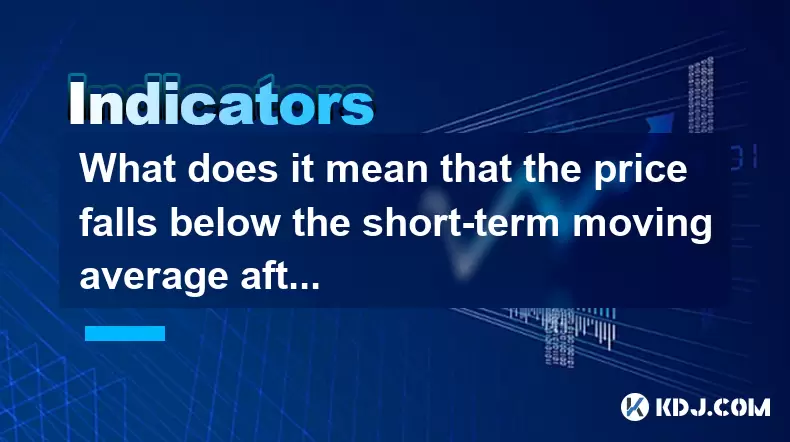
What does it mean that the price falls below the short-term moving average after the RSI top divergence?
Jul 26,2025 at 11:01pm
Understanding RSI Top Divergence in Cryptocurrency TradingThe Relative Strength Index (RSI) is a momentum oscillator widely used in cryptocurrency tra...
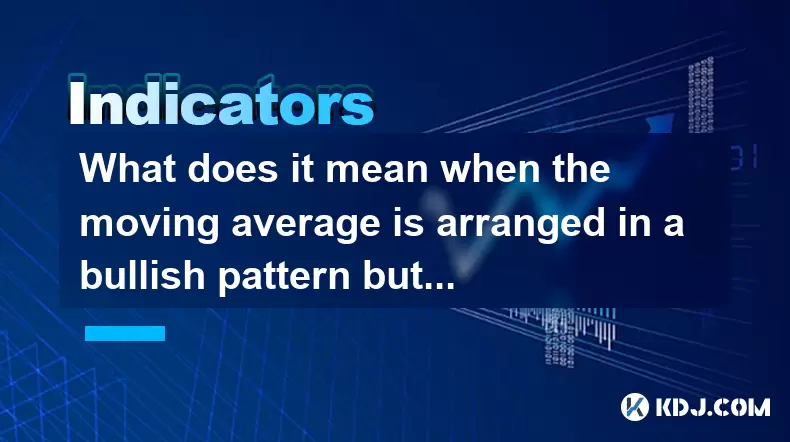
What does it mean when the moving average is arranged in a bullish pattern but the MACD bar is shortened?
Jul 27,2025 at 06:07am
Understanding the Bullish Moving Average PatternWhen traders observe a bullish moving average pattern, they typically refer to a configuration where s...

What signal does the ROC send when it rises rapidly from a low level and breaks through the zero axis?
Jul 27,2025 at 10:15am
Understanding the Rate of Change (ROC) IndicatorThe Rate of Change (ROC) is a momentum-based oscillator used in technical analysis to measure the perc...

What does it mean that the rebound is blocked after the moving average is arranged in a short position for the first time?
Jul 26,2025 at 10:51am
Understanding the Short-Term Moving Average ConfigurationWhen traders refer to a 'short position arrangement' in moving averages, they are describing ...

What does it mean that the parabolic indicator and the price break through the previous high at the same time?
Jul 26,2025 at 07:22pm
Understanding the Parabolic Indicator (SAR)The Parabolic SAR (Stop and Reverse) is a technical analysis tool developed by J. Welles Wilder to identify...

What does it mean that the upper and lower tracks of the Bollinger Band open upward at the same time?
Jul 27,2025 at 02:49pm
Understanding the Bollinger Band StructureThe Bollinger Band is a widely used technical analysis tool developed by John Bollinger. It consists of thre...

What does it mean that the price falls below the short-term moving average after the RSI top divergence?
Jul 26,2025 at 11:01pm
Understanding RSI Top Divergence in Cryptocurrency TradingThe Relative Strength Index (RSI) is a momentum oscillator widely used in cryptocurrency tra...

What does it mean when the moving average is arranged in a bullish pattern but the MACD bar is shortened?
Jul 27,2025 at 06:07am
Understanding the Bullish Moving Average PatternWhen traders observe a bullish moving average pattern, they typically refer to a configuration where s...
See all articles

























































































